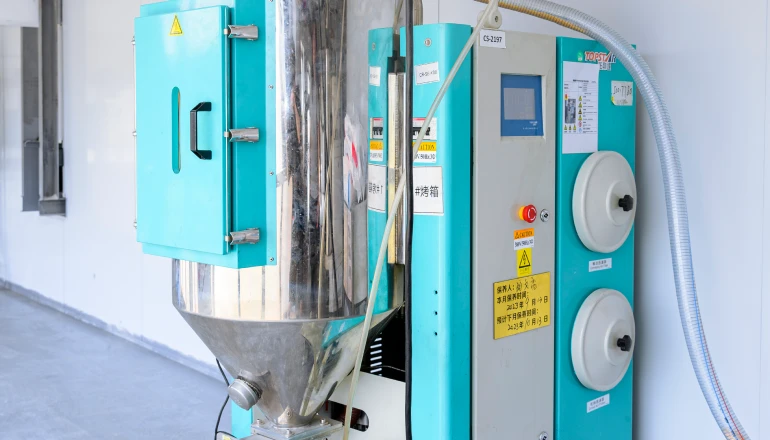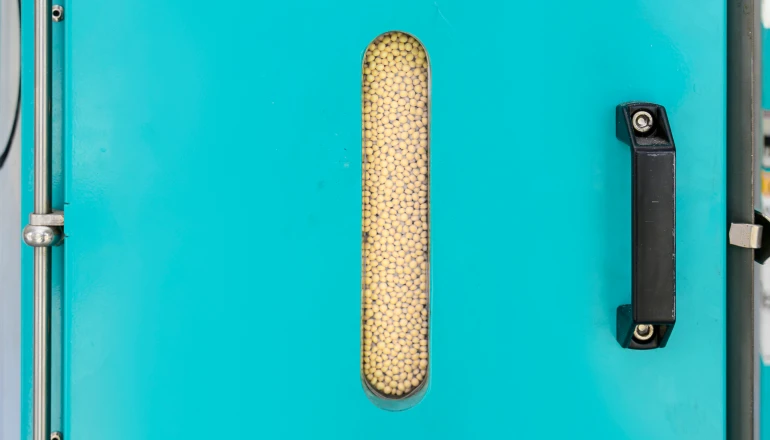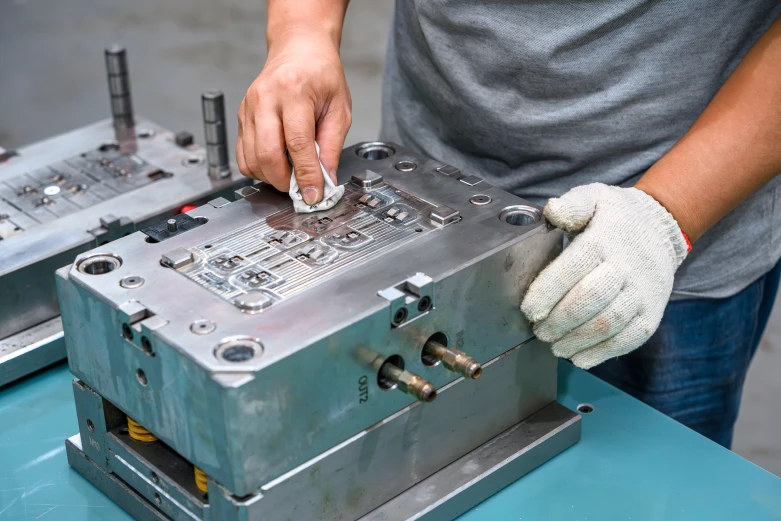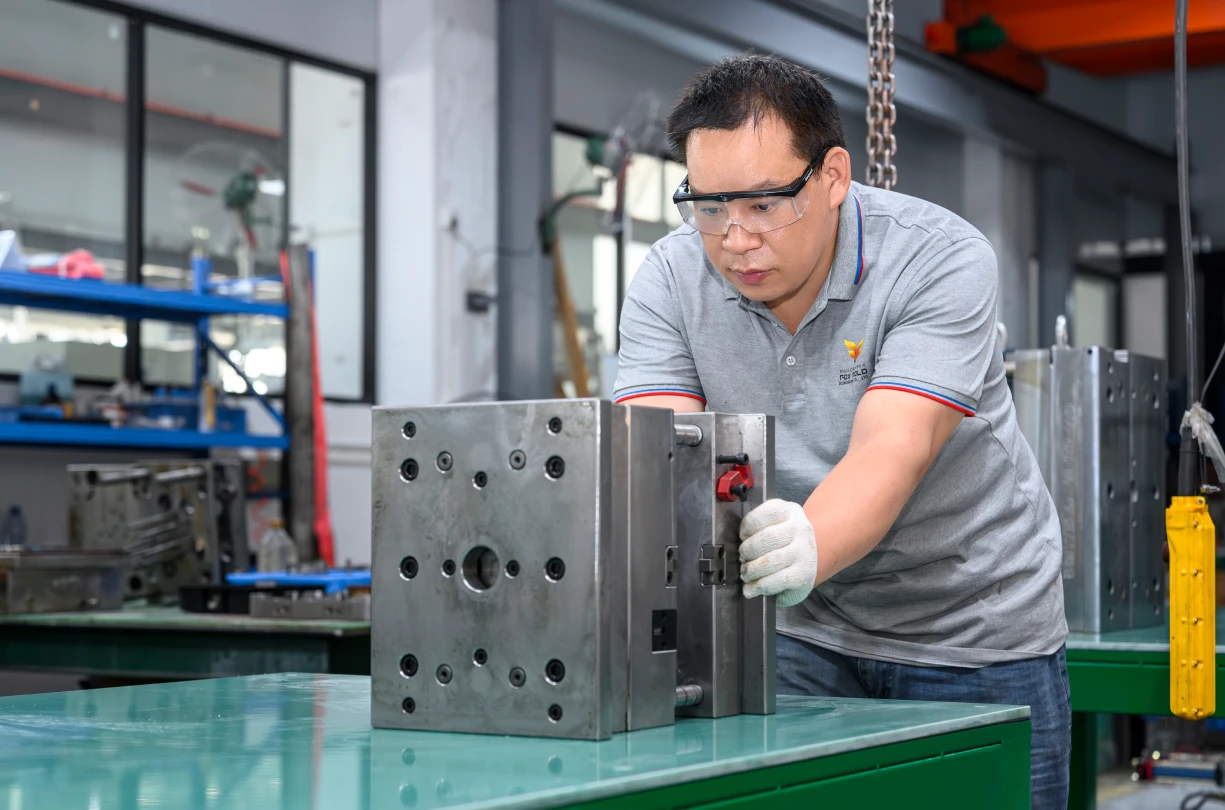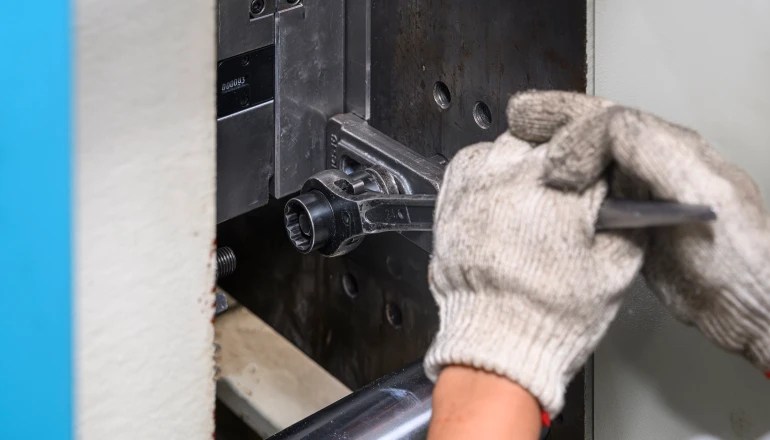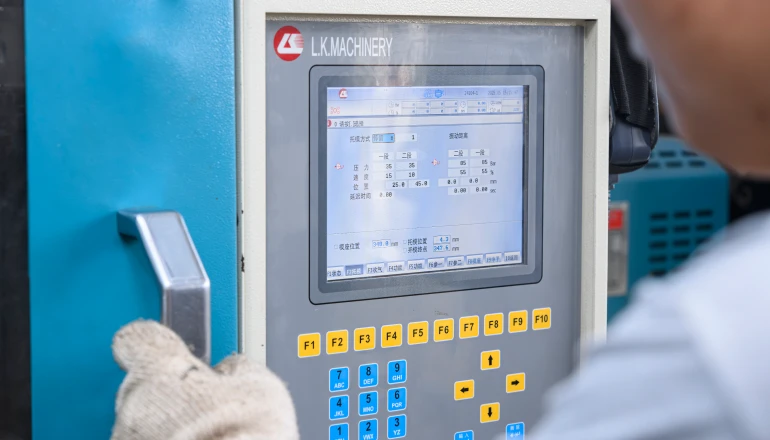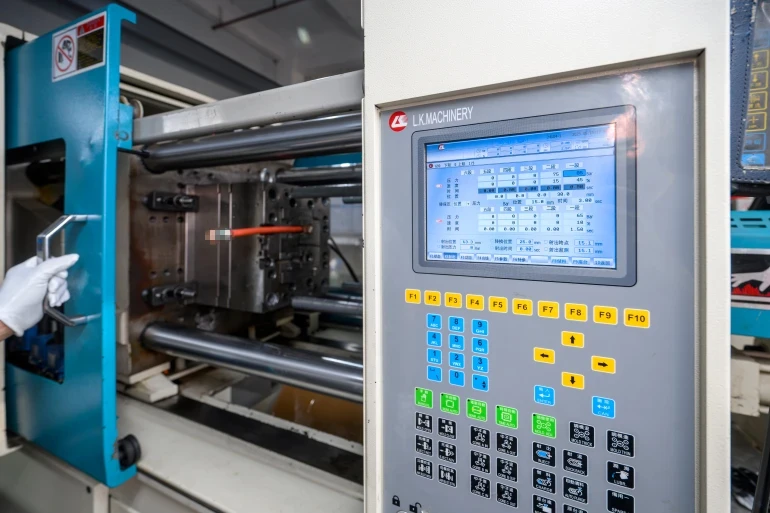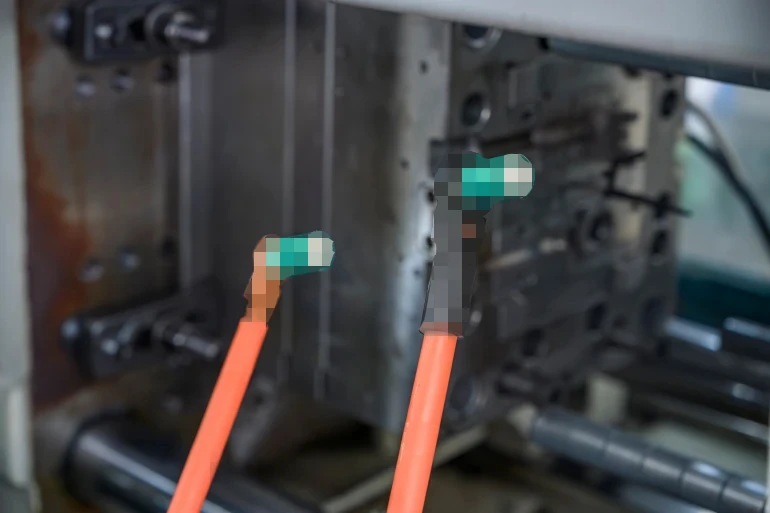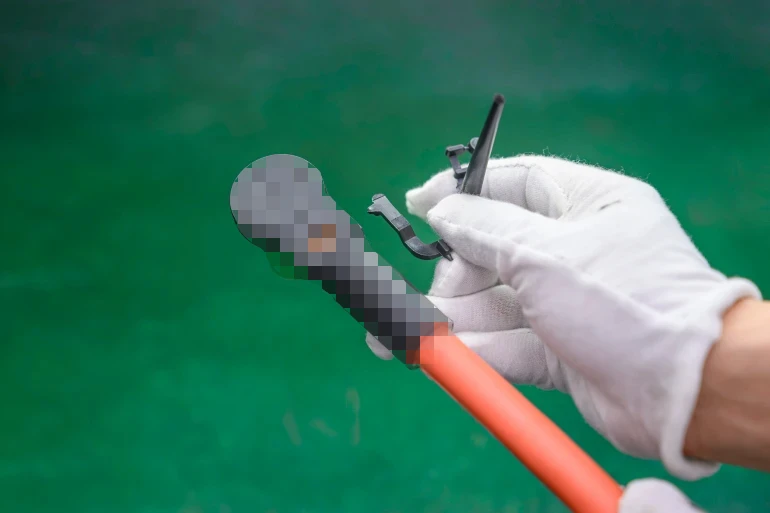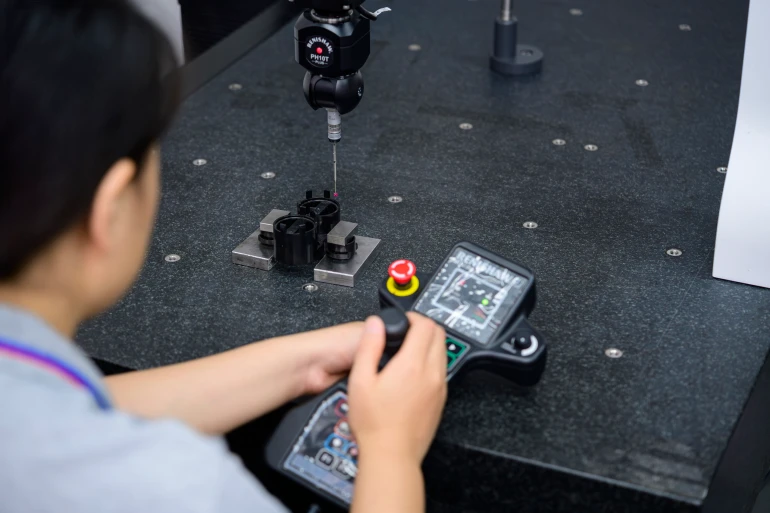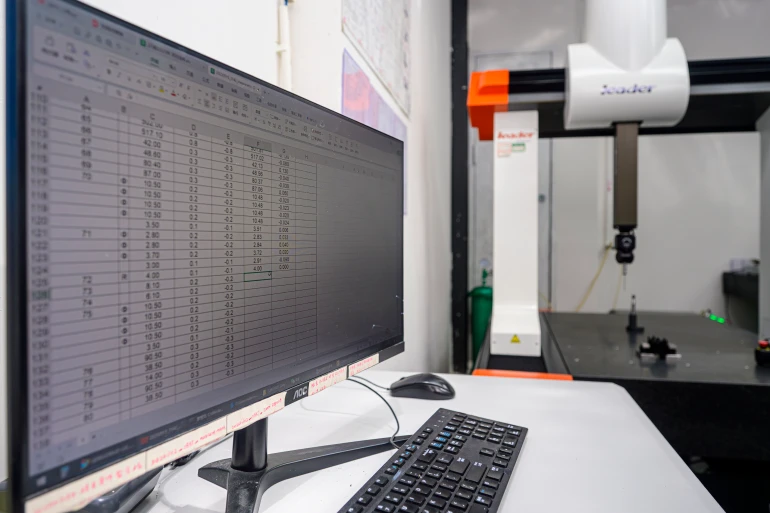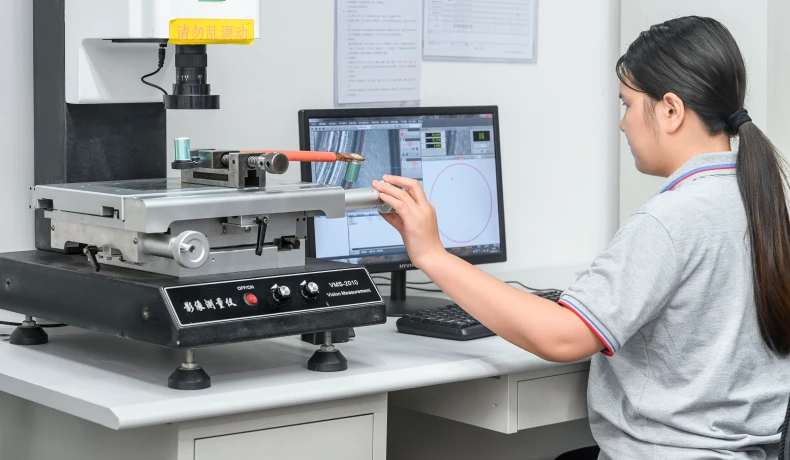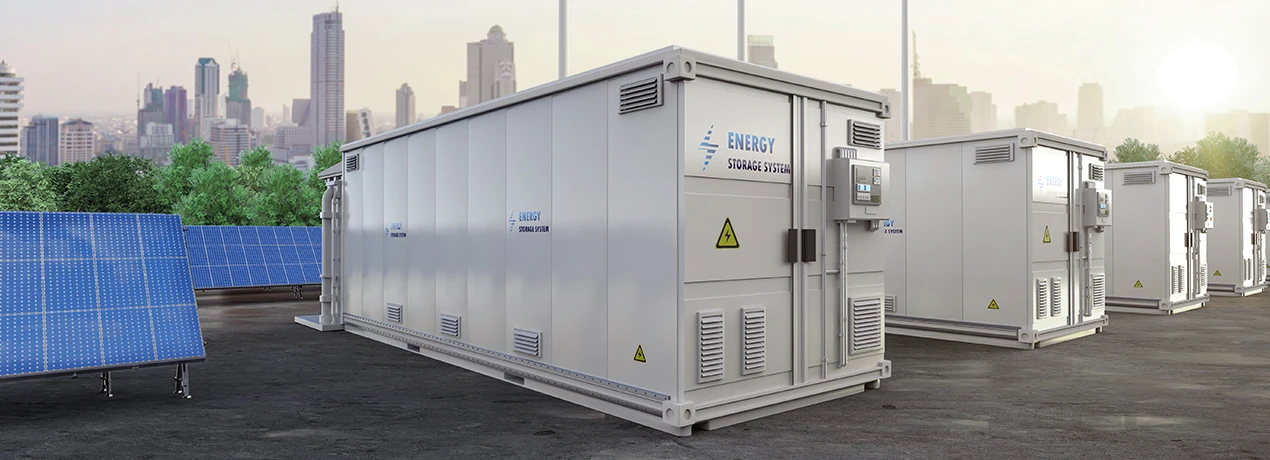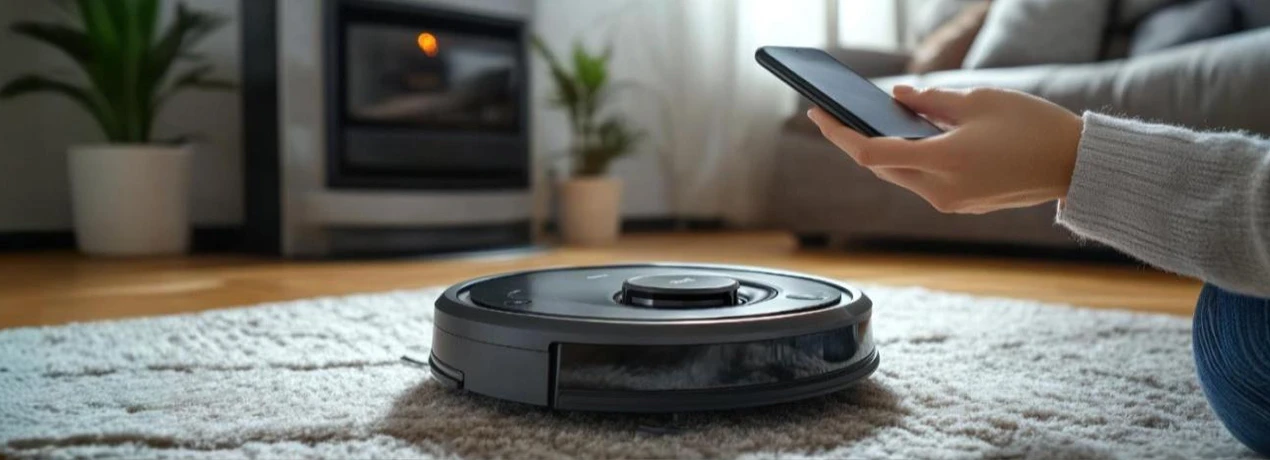- Home
- Overmolding Injection Molding
Fox mold
Reliable Overmolding Injection Molding Solutions Provider
When it comes to high quality, on-time overmoulding, you need look no further than Fox Mold. We produce a range of overmoulded parts that can be customised with your choice of design and material. In addition to our expert injection moulding capabilities, we also offer a range of services to streamline your procurement experience.
- Seamless bond and ideal for high-performance parts manufacturing
- +/-0.001MM Tolerance
- Fast turnaround time of up to 2 weeks
- MOQ from 1 piece
- Certification: ISO 9001: 2015; ISO 14001: 2015;
Overmolding Solutions in Fox Mold
Plastic Over Plastic
Plastic over plastic overmolding, is an injection molding process where a plastic piece is inserted into the mold before pouring molten plastic inside.
Once cooled and cured, the result is a singular piece that has enhanced properties and shares the strengths of different materials if two types of plastics are used.
The process is ideal for creating non-slip handles or textured surfaces.
Plastic Over Metal
In this process, molten plastic is molded over the metal insert, forming a single piece that has the durability of metal and the comfortability of plastic.
This process eliminates the need for separate steps to assemble a product while improving its functionality and production speeds.
Plastic over metal overmolding is seen in creating medical devices, door handles, and other consumer goods.
Silicone Over Metal
A variation of overmoulding, this involves covering the metal substrate with the Silicone material, with a chemical bonding solution applied to the metal surface for a better result.
The process not only produces an aesthetically pleasing part, but also imparts vibration damping properties to the finished part, while protecting the metal component from normal wear and tear.
Common applications include electronic connectors, tool handles and gaskets.
TPE(or EPDM) Over Plastic
Injection molding an TPE(or EPDM) over the plastic substrate to create a single piece.
The final part usually offers better durability, a comfortable yet tighter grip, and enhances the overall look and feel of the product.
The process is often used in creating handles for power tools, sports equipment, and toothbrush handles, to name a few.
/ Services /
Our One-Stop Services
Fox Mold goes beyond the mold of traditional plastic injection molding manufacturers by offering an array of services.
With our years of production expertise, we can quickly transition from concept to practical samples ideal for testing and small-batch manufacturing.
We help design craft specific tools to streamline the injection molding process, including cooling systems, gates and runners, and ejection mechanisms.
Expert engineers help design and create dedicated molds with tight tolerances and detailed configurations to ensure the accuracy of each injection-molded part.
The cost-effective plastic injection molding process produces highly durable and consistent plastic parts with tight tolerances.
Efficiently produce plastic molded parts with metal inserts that add durability and functionality while staying cost-effective.
Create complex silicone rubber parts with ease using our cutting-edge LSR injection molding process with consistent quality at shorter production times.
How Does It Work
Fox Mold adheres to a strict manufacturing process, ensuring we produce the right injection molded parts according to your needs.
Raw Material Preparation
Fox Mold adheres to a strict manufacturing process, ensuring we produce the right injection molded parts according to your needs.
Mold Installation and Mold Trial
The mold is then installed on the machine, properly calibrating the pressure in the process for a tight fit.
Injection
The plastic or metal insert is placed in the mold before pouring the melted plastic material, forming a cohesive bond between the two parts.
Ejection
Fox Mold adheres to a strict manufacturing process, ensuring we produce the right injection molded parts according to your needs.
Post-processing
After checking the part for any defects, our team proceeds to post-processing, like ultrasonic welding and surface finishing.
Surface Finishing Options
Give your overmolded injection molded plastic parts a better look and feel with our surface finishing options:
- Painting
- Powder Spraying
- Galvanizing
- Oxidizing
- Sandblasting
- Screen Printing
- Laser Engraving
Plastic Material Options
Understanding the diverse demands of the overmolding injection mold industry, we offer a wide range of materials to suit various requirements. From smooth and transparent plastics to opaque and durable plastics, we carry them all.
- Some popular materials we have include PVC, PC, PP, PA, POM, ABS, PMMA, PTFE, PPS, and HDPE.
Overmolding Injection Molding for Various Industries
Explore the various applications of overmolding injection molding.
FAQ
What is Overmolding?
It is a two-step procedure, where you first fabricate your solid plastic component (base layer), and then directly apply a second material on top of it, enabling the formation of a single homogeneous piece.
So instead of making two discrete parts, and gluing them together or some way making them one, you now get an integrated part that is stronger, looks better, and is generally cheaper to manufacture.
For example, look at your toothbrush handle. Notice that it has both hard and soft areas? That's overmolding.
How does overmolding work
Basically, the process begins by injecting your primary material (rigid material such as ABS, PC or PP plastics would be the most common) into your first mold, allowing the material to cool and solidify. This is your substrate. After which, you move that part into a second mold. Then, over-inject a different material (typically a more flexible material) around/on your substrate in the second mold. Chemical bonding occurs if surface energies are matched, otherwise, mechanical interlocks (such as grooves & undercuts) will lock in place.
The success/failure depends on the ability of the two materials to stick together (through chemical bonds or mechanical locks such as grooves or undercuts).
What is the difference between Insert Molding and Overmolding?
Insert Molding vs Overmolding, What they are:
Insert Molding: You place a pre-manufactured item (often metal, frequently a threaded insert) directly into the mold and inject plastic around it in one shot.
Overmolding: Two separate molding operations to add different plastic materials together.
When to use them:
Insert Molding: Nice option for adding strength or threaded connections, or metals to plastic parts.
Overmolding: When you need parts that have different material properties in different areas (grip, cushioning, color).
Their advantages:
Insert Molding: Faster, cheaper per piece, single-step operation.
Overmolding: More flexibility in design, better aesthetics and more materials combinations.
Tips for Overmolding Design
Wall sections should be kept between 1.5–3 mm. Slim sections may create vulnerable spots, whereas wider sections could bend or create gaps.
Curvature of 0.5mm and angles between 1 and 2 degree help the materials flow together smoothly.
Some materials happen to stick together naturally (e.g. TPU on ABS). In cases where bonding doesn't occur naturally, dovetail or grooves can be added to assist.
Always ensure to create shallow grooves (0.4–0.8 mm) where the material layers will meet, to prevent the overmold material from bleeding into the wrong area.
A spiral-flow test can be used to help simulate how the materials will behave together.
What materials are used in Overmolding?
For Your Substrate: These rigid materials provide strength and maintain shape.
ABS: A great all round material, bonds to multiple varieties of elastomers.
PC: Super tough, good for extremely demanding applications.
PBT, Nylon, Polypropylene: Each has unique characteristics available to address specific applications.
For Your Overmold: These flexible materials provide grip, cushion, or seal.
TPE: Flexible and durable, bonds well.
TPU: Durable against wear and is very flexible.
TPV, LSR: Specialized applications depending on performance requirements.
Bonding:
Chemical bond happens naturally if the compatible materials, in the primary and overmold are appropriate, like TPE on ABS, but mechanical bonding should be your secondary option in any bonding application.
Advantages and Disadvantages of Overmolding
Advantages:
Fewer assembly headaches: One part means you don't have to deal with multiple pieces to assemble.
Better user experience: Soft-touch zones where your hands naturally grip.
You get the rigidity, plus shock absorption.
Beautiful aesthetics: Two-color designs, with one shot branding.
Removing adhesives, fasteners, and assembly labor saves costs.
Disadvantages:
Higher upfront investment: You need two molds and perhaps longer cycle times.
Material compatibility is key: Some combinations will not meld together well.
Design constraints: Your part must have specific features in order to work (proper draft, wall thickness, etc.)
Quality Control: Different materials shrink differently, so just because one material gets knocked out and runs well, does not mean that there won't be warping if it is not managed correctly.
Common Applications of Insert Molding Parts
Insert molding applications are typically encountered in the following areas:
Automotive Industry
Provides electrical connectivity and environmental protection in sensor housing.
Provides associated electrical connectors with sealing as part of the connector.
Soft-touch switch gear.
Medical Devices
Soft-touch grip for instruments.
Tubing connectors that can be re-labelled as sealed, reliable connections.
Biocompatible plastics for housing implants/devices.
Industrial and Aerospace
Bearings or bushings with metal inserts that were molded in.
Structural brackets utilizing material to best optimize performance.
Parts requiring strength and vibration dampening.
Consumer Electronics and Appliances
Grips for power tools, featuring a sturdy interior and a comfortable touch surface.
Knobs and controls on appliances.
Buttons integrated into the phone's cases.
